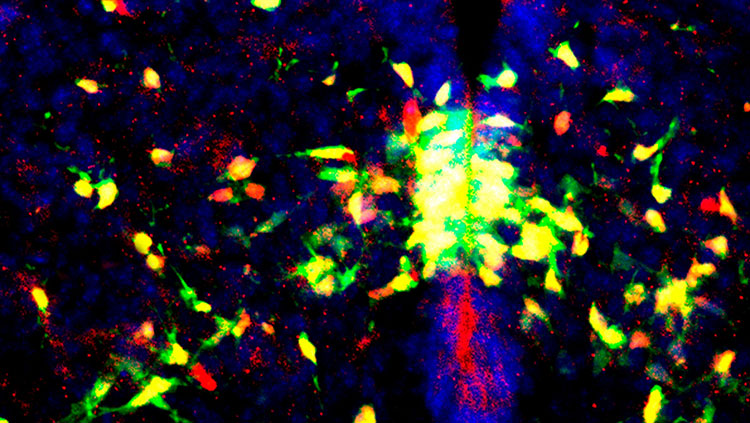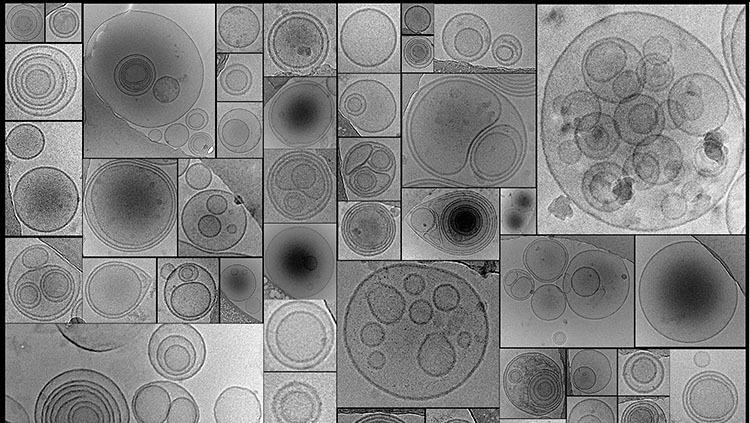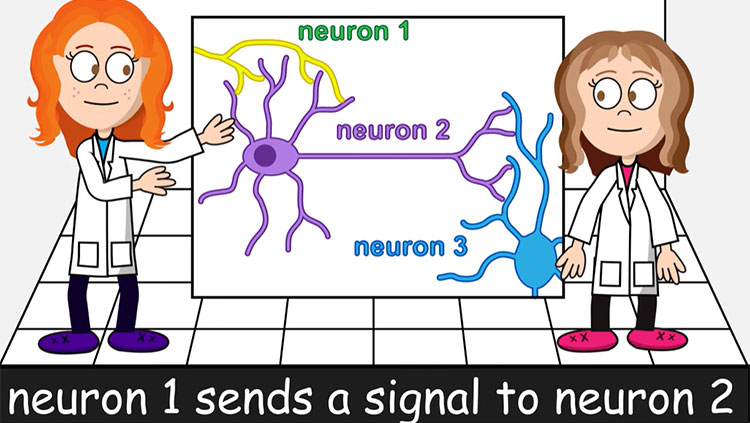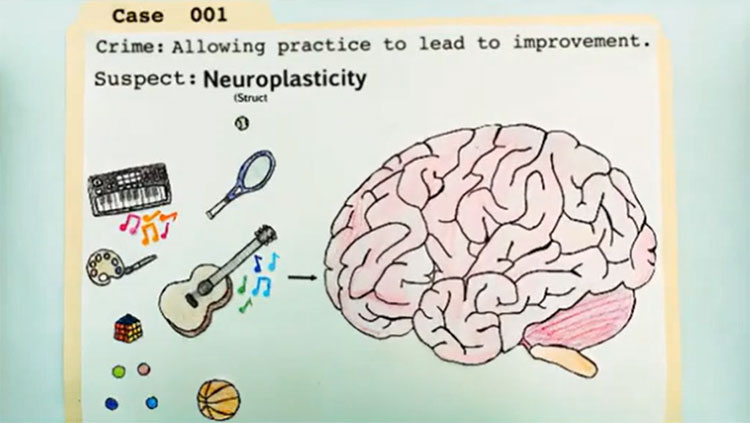For neural electrical signals to get somewhere, neuron wires need insulation. That’s why the brain has a network of supporting cells called oligodendrocytes — the electricians of the brain. They envelop the neurons, turning their bare wires into properly sheathed cables.
When the brain is very young, just six weeks after conception in humans, the forerunners of these electricians develop first in the spinal cord (they appear here as yellow splotches). In a series of waves, they spread out and reach every nook and cranny of the spinal cord, grow into oligodendrocytes, and start insulating. The same process happens later in every part of the brain. Unusually for forerunner cells like these though, some pre-oligodendrocytes persist into adulthood, making up one in 20 adult brain cells. This feature represents something of a gamble, as the flexible cells are more likely to start dividing out of control and become cancerous. But the benefit of always having fresh electricians in the training pipeline appears to outweigh the risk.
Content Provided By
BrainFacts/SfN
References
Bergles, D. E., & Richardson, W. D. (2015). Oligodendrocyte Development and Plasticity. Cold
Spring Harbor Perspectives in Biology, 8(2), a020453–a020453. doi: 10.1101/cshperspect.a020453
Also In Cells & Circuits
Trending
Popular articles on BrainFacts.org


















